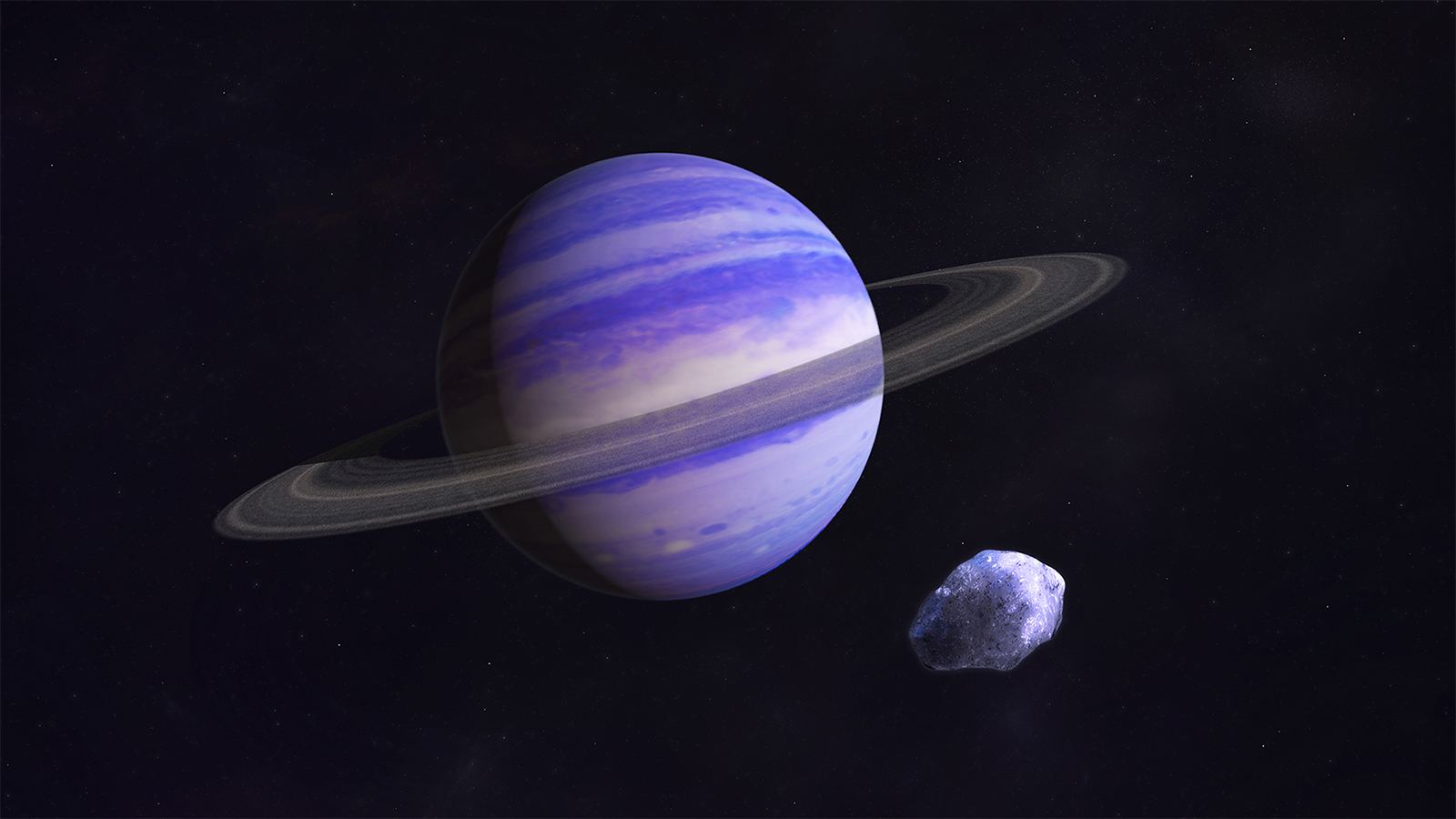The Basics
Neptunian exoplanets are similar in size to Neptune or Uranus in our solar system. Neptunian planets typically have hydrogen and helium-dominated atmospheres with cores of rock and heavier metals.
Neptunian exoplanets are similar in size to Neptune or Uranus in our solar system. (Neptune is about four times the size, or radius, of Earth and almost 17 times its mass, or weight.) Neptunian exoplanets may have a mixture of interiors though all would be rocky with heavier metals at their cores. Neptunian planets typically have hydrogen- and helium-dominated atmospheres. We’re also discovering mini-Neptunes, planets smaller than Neptune and bigger than Earth. No planets like these exist in our solar system.
While Uranus and Neptune are mostly composed of hydrogen and helium, both also contain water, ammonia, and methane. Since these three chemicals are typically found frozen as ices in the cold outer solar system, Uranus and Neptune are often referred to as "ice giants" (though their interiors are warm enough that the "ices" inside them are not frozen). Researchers discovered an ice giant exoplanet 25,000 light-years away in 2014. We don’t know much about its composition, what it’s made of, or what elements are present in its atmosphere, but it’s in a similar orbit to its star as Uranus is to our Sun.
It can be hard to tell a lot about distant planets’ compositions. Space telescopes like NASA’s Hubble (and formerly Spitzer) glean information about planet atmospheres by analyzing starlight. As starlight passes through a planet's atmosphere, atoms and molecules absorb light at certain wavelengths, blocking it from the telescope's view. The more light a planet blocks, the larger the planet appears. By analyzing the amount of light blocked by the planet at different wavelengths, called spectroscopy, researchers can determine which molecules make up the atmosphere. NASA’s Transiting Exoplanet Survey Satellite (TESS) is designed to discover planets smaller than Neptune that transit stars bright enough to enable follow-up spectroscopic observations that can provide atmospheric compositions.
Neptunian exoplanets often have thick clouds that block any light from coming through, hiding the signature of the molecules in the atmosphere. The James Webb Space Telescope, launched in 2021, is getting our best looks yet at exoplanet atmospheres.
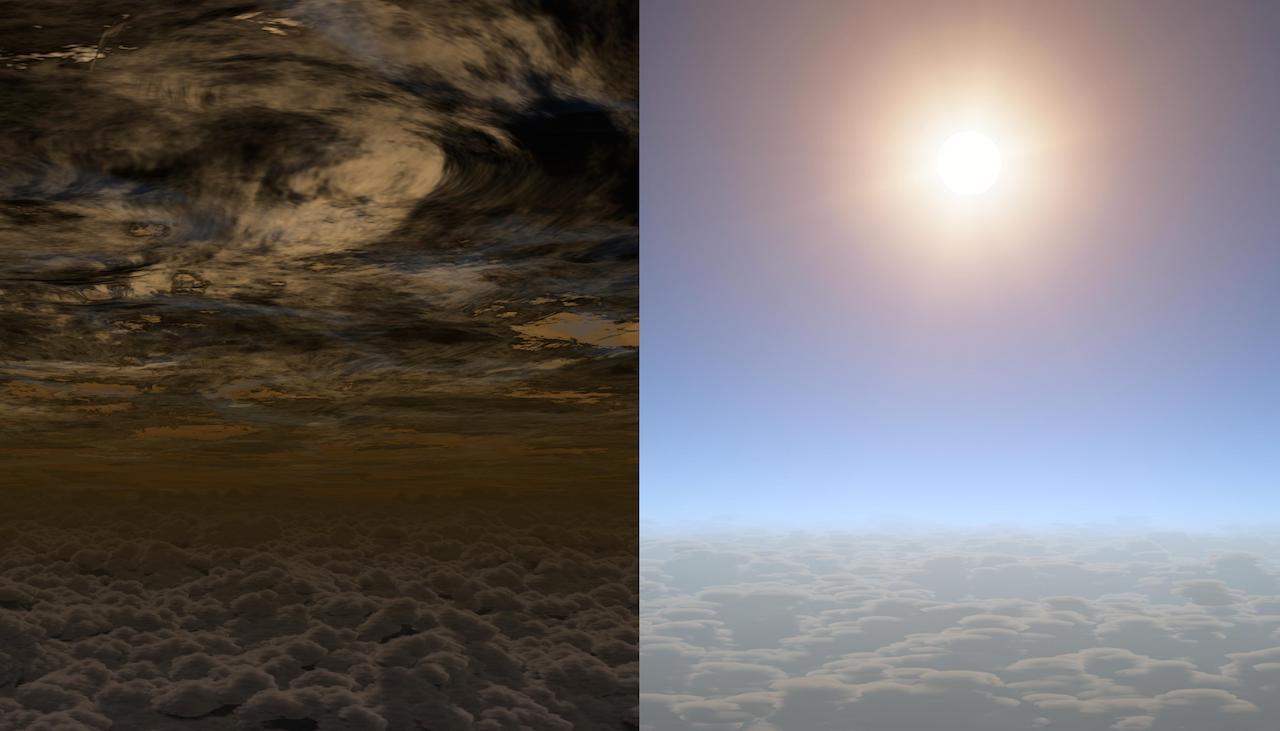
Astronomers were elated to find clear skies on a Neptune-size planet called HAT-P-11b in 2017. Without clouds to block the view, they were able to identify water vapor molecules in the exoplanet's atmosphere. HAT-P-11b is gaseous with a rocky core, much like our own Neptune. Its atmosphere may have clouds deeper down, but the combined observations from Hubble, Spitzer, and Kepler showed that the upper region is cloud-free. This good visibility enabled scientists to detect water vapor molecules in the planet's atmosphere.
3 Key Neptune-like Planet Facts
(with artists' concepts of these alien worlds)
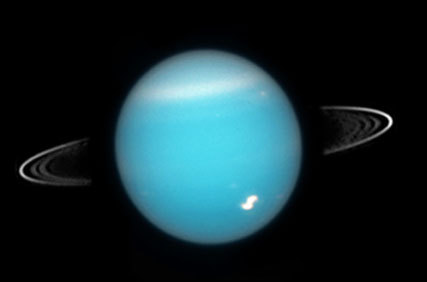 01
01Faraway and freezing
In 2014, researchers discovered the first ice giant exoplanet 25,000 light-years away.
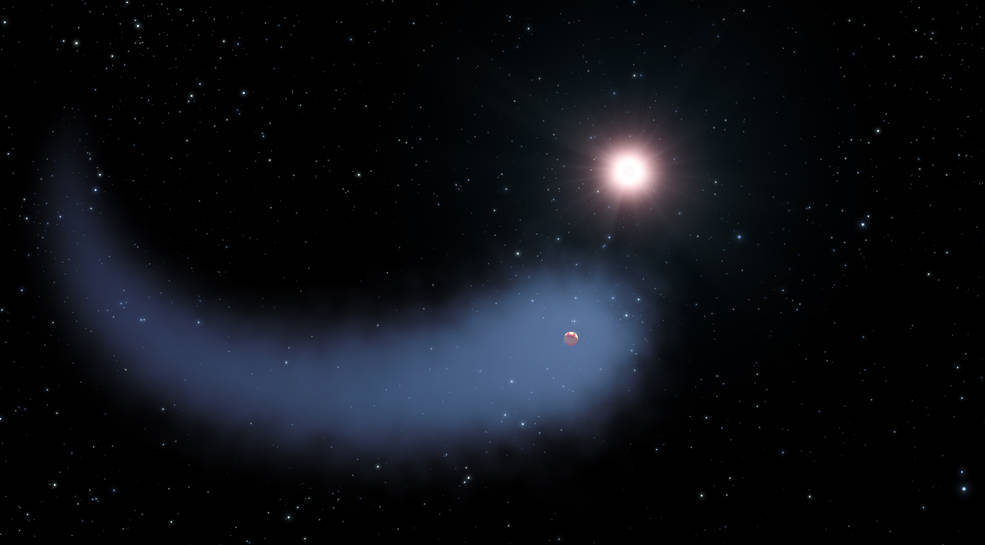 02
02Follow that cloud!
An enormous comet-like cloud of hydrogen is bleeding off of a warm, Neptune-sized exoplanet.
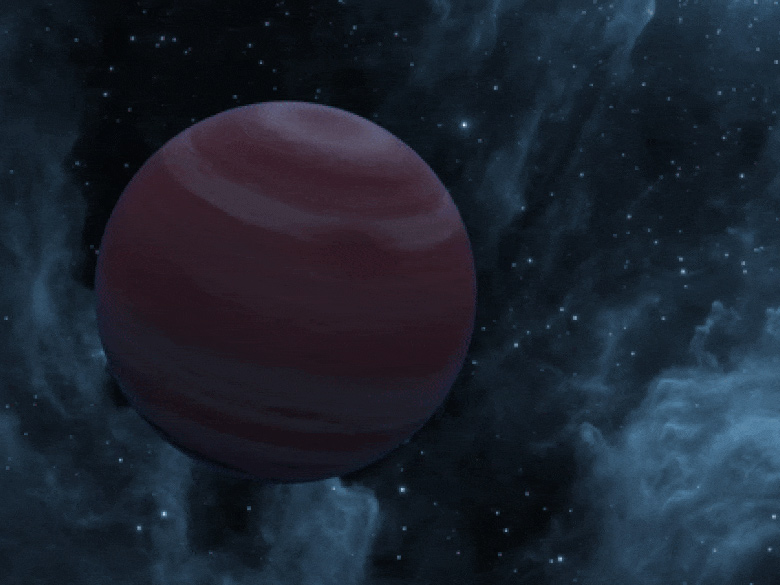 03
03Neptunian neighborhood
Neptune-size worlds may be more likely to form in the icy outer reaches of planetary systems than other kinds of planets.
A Neptune Desert
Astronomers have found hot, Jupiter-sized planets and sizzling super-Earths in a close embrace of their stars. But so-called "hot Neptunes," whose atmospheres are heated to more than 1,700 degrees Fahrenheit (more than 900 degrees Celsius), have been much harder to find. In fact, only a handful of hot Neptunes have been found so far.
Most of the known Neptune-sized exoplanets, like HAT-P-11b above, are merely "warm," because they orbit farther away from their stars than those in the region where astronomers would expect to find hot Neptunes. The mysterious hot-Neptune desert suggests that either such alien worlds are rare, or they were plentiful at one time, but have since been transformed.
A few years ago, astronomers using Hubble found that one of the warmest known Neptunes (GJ 436b) is losing its atmosphere. That planet isn't expected to evaporate away, but hotter Neptunes might not have been so lucky. A star's intense radiation can heat an atmosphere to a point where it escapes the planet's gravitational pull like an untethered hot air balloon. The escaping gas forms a giant cloud around the planet that dissipates into space.
This might be the case for a planet called GJ 3470b, a “very warm Neptune” that is losing its atmosphere at a rate 100 times faster than that of GJ 436b. Both planets reside about 3.7 million miles (5.5 million kilometers) from their stars. That's a tenth the distance between our solar system's innermost planet, Mercury, and the Sun. One reason why GJ 3470b may be evaporating faster than GJ 436b is that it is not as dense, so it is less able to gravitationally hang on to the heated atmosphere.
Both of the planets orbit red dwarf stars, but GJ 3470b orbits a much younger star, only 2 billion years old, compared to GJ 436b’s 4- to 8-billion-year-old star. The younger star is more energetic, so it bombards the planet with more blistering radiation than GJ 436b receives.
Finding two evaporating, warm Neptunes reinforces the idea that the hotter version of these usually distant worlds may be a class of planets in transition. It could be the ultimate fate of hot and very warm Neptunes is to shrink down to mini-Neptunes – planets with heavy, hydrogen-dominated atmospheres that are larger than Earth but smaller than Neptune. Or they may downsize even further to become super-Earths – more massive, rocky versions of Earth.
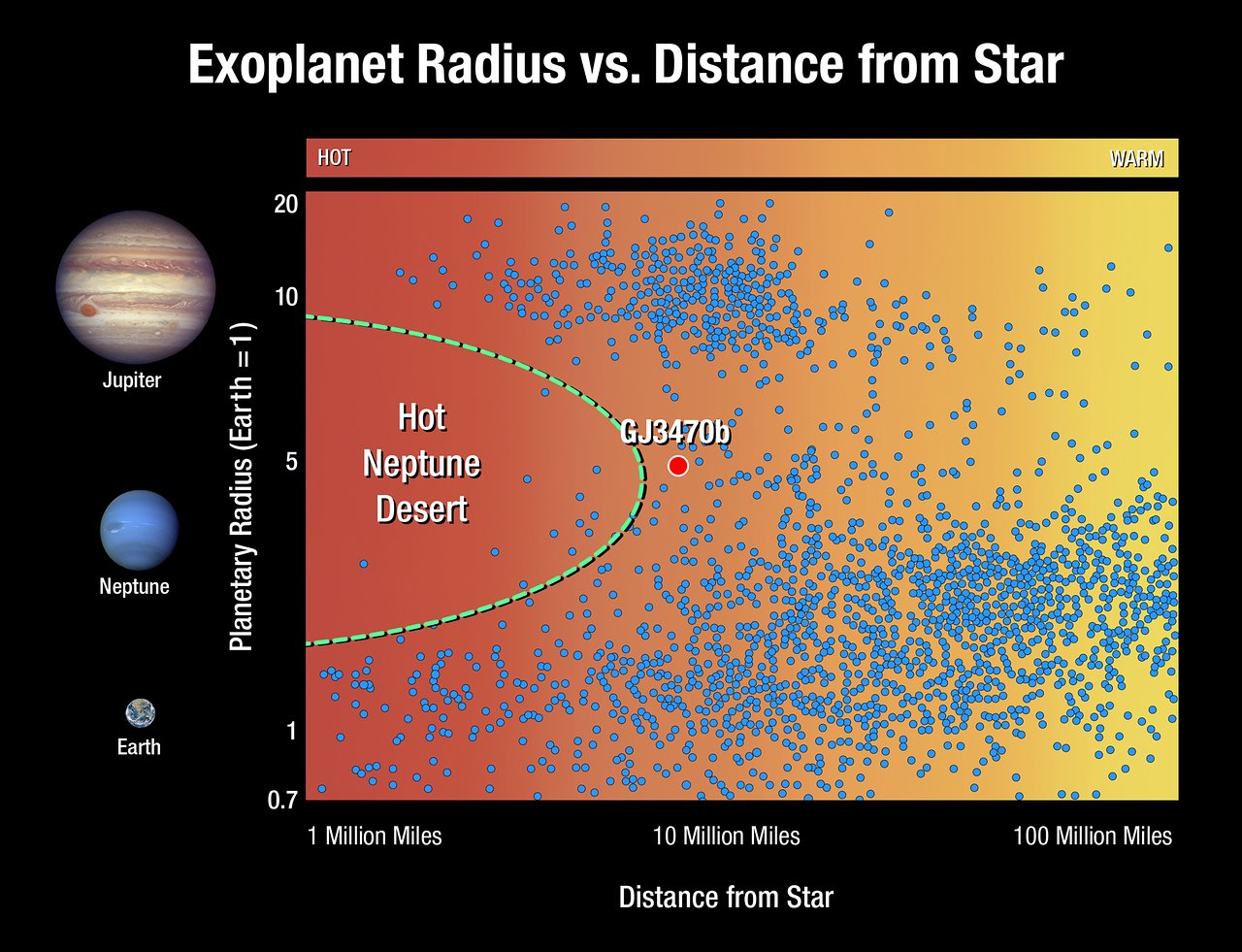
Beyond the ‘Snow Line’
In 2016, a study found that Neptune-mass worlds may be the most common type of planet to form in the icy, outer realms of planetary systems. Researchers focused on planets found by a technique called gravitational microlensing. The study provided the first indication of the types of planets waiting to be found far from a host star, where scientists suspect planets form most efficiently.
"We've found the apparent sweet spot in the sizes of cold planets. We conclude that Neptune-mass planets in these outer orbits are about 10 times more common than Jupiter-mass planets in Jupiter-like orbits," said the study’s lead scientist, Daisuke Suzuki, then a post-doctoral researcher at NASA's Goddard Space Flight Center in Greenbelt, Maryland, and the University of Maryland Baltimore County.
By looking at planet frequency compared to the mass ratios of planets and stars and the distances between them, they determined that cold, Neptune-mass worlds are likely to be the most common types of planets beyond the so-called snow line – the distance from a star beyond which water remains frozen during planetary formation. In the solar system, the snow line is thought to have been located at about 2.7 times Earth's distance from the Sun, placing it in the middle of the main asteroid belt today.
Explore the planet types: Gas Giant, Neptune-like, Super-Earth and Terrestrial
Or move on to the building blocks of galaxies: stars!
More to Explore

Experience the Gravity of a Super-Earth
Twice as big in volume as the Earth, HD 40307 g straddles the line between "Super-Earth" and "mini-Neptune" and scientists aren't sure if it has a rocky surface or one that's buried beneath thick layers of gas and ice. One thing is certain though: at eight times the Earth's mass, its gravitational pull is much, much stronger.
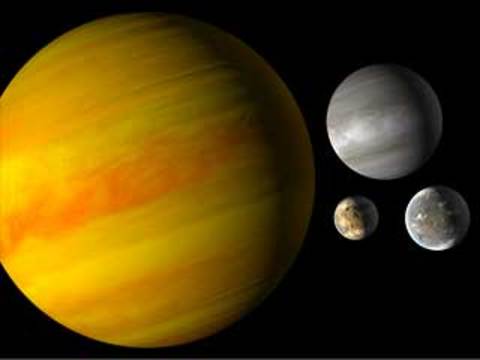
Exoplanet Types Infographic
Exoplanets, planets beyond our solar system, whether orbiting other stars or floating freely between them, can make the planets closer to home look tame by comparison.
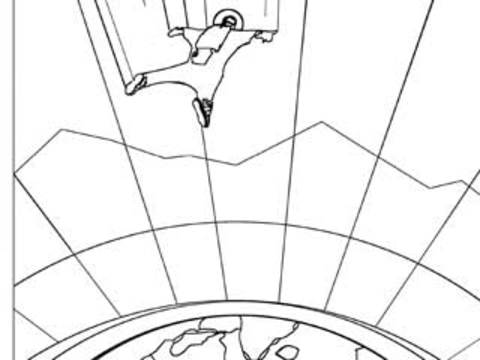
HD 40307 g Coloring Page
Add your own creative vision to the coloring page based on our popular Exoplanet Travel Bureau poster for HD 40307 g. Do you picture a rocky planet or one shrouded in gas and ice?
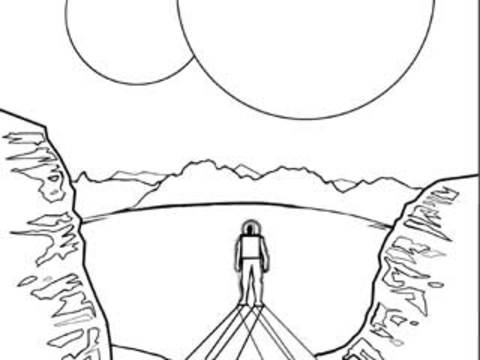
Kepler-16b Coloring Page
If you visited Kepler-16b, what colors do you think you’d see? Download the coloring page based on our Exoplanet Travel Bureau poster for the world with two suns.

